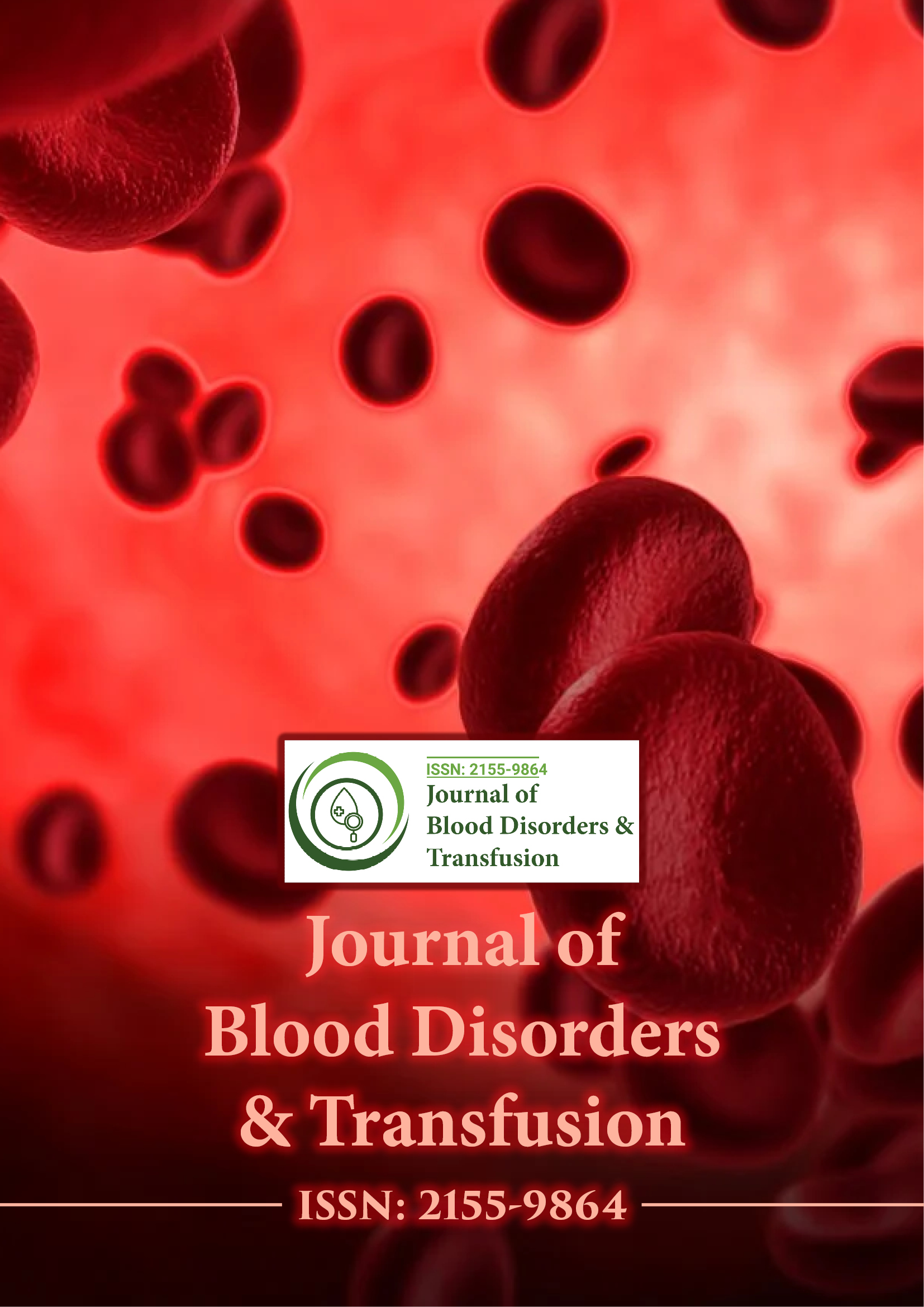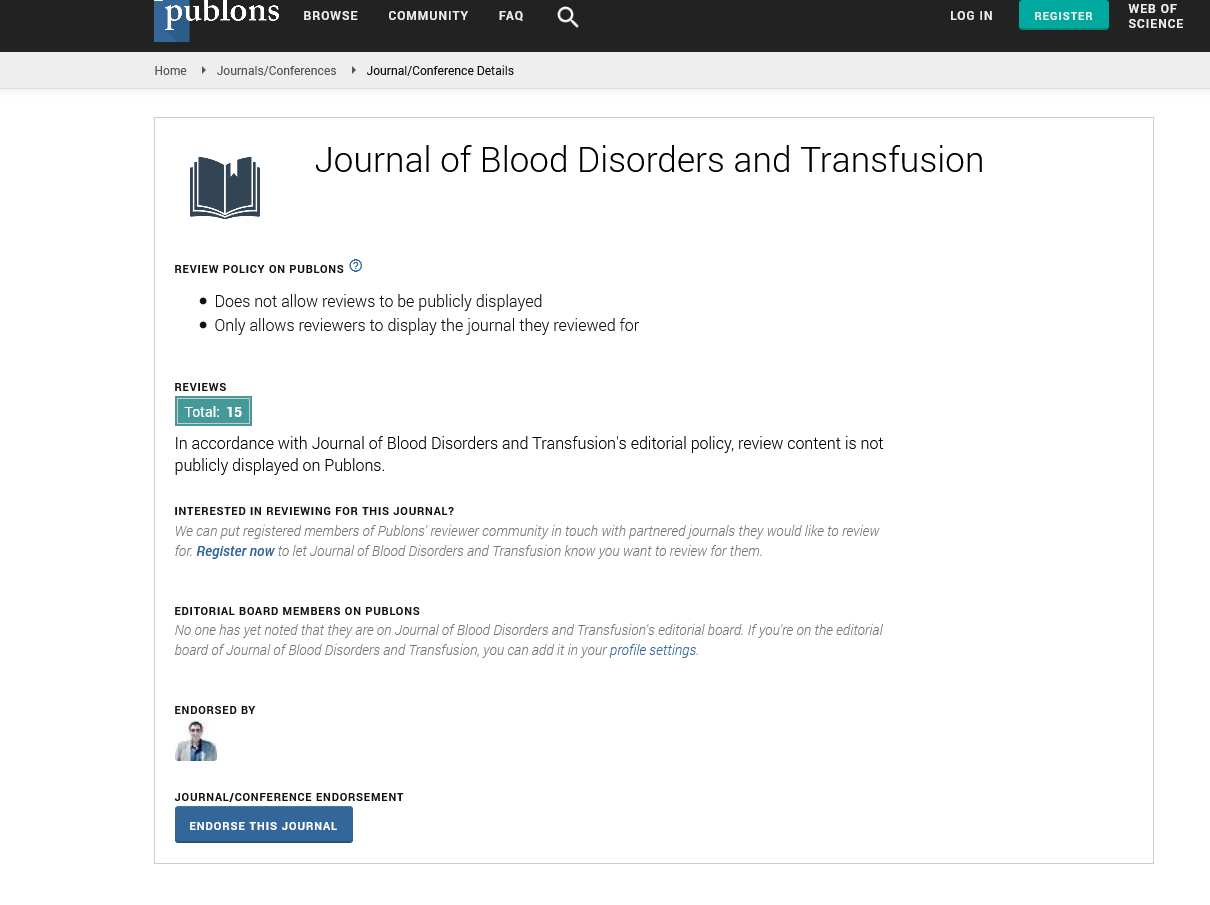Indexed In
- Open J Gate
- Genamics JournalSeek
- JournalTOCs
- Ulrich's Periodicals Directory
- RefSeek
- Hamdard University
- EBSCO A-Z
- OCLC- WorldCat
- Proquest Summons
- Publons
- Geneva Foundation for Medical Education and Research
- Euro Pub
- Google Scholar
Useful Links
Share This Page
Journal Flyer

Open Access Journals
- Agri and Aquaculture
- Biochemistry
- Bioinformatics & Systems Biology
- Business & Management
- Chemistry
- Clinical Sciences
- Engineering
- Food & Nutrition
- General Science
- Genetics & Molecular Biology
- Immunology & Microbiology
- Medical Sciences
- Neuroscience & Psychology
- Nursing & Health Care
- Pharmaceutical Sciences
Heterogeneity of abnormal RUNX1 leading to clinicopathological variations in childhood B lymphoblastic leukemia
2nd International Conference on Hematology & Blood Disorders
September 29-October 01, 2014 DoubleTree by Hilton Baltimore-BWI Airport, USA
Xiayuan Liang
Scientific Tracks Abstracts: J Blood Disorders Transf
Abstract:
RUNX1 gene on Chromosome 21 is frequently aberrant in childhood B-ALL. It is mainly manifested by t(12;21)(p13;q22) resulting in formation of ETV6- RUNX1 fusion gene or amplification of RUNX1 (iAMP21). Although B-ALLs with iAMP21 have more aggressive clinical behavior, the differences of detailed clinicopathologic features resulting from different RUNX1 alterations have not been investigated. This study evaluates how different RUNX1 abnormalities affect the clinicopathology of B-ALL. At Children's Hospital Colorado, 77 cases of B-ALL with iAMP21 (10 cases), ETV6- RUNX1 without RUNX1 gain (33 cases), and ETV6- RUNX1 with RUNX1 gain (34 cases) from 1997-2013 were reviewed. The differences of age, gender, WBC≥50K, CSF+, immunophenotype, blast proliferation rate, and mortality were analyzed. We found that (1) the mean age was older in iAMP group (10.1 years) than that of ETV6-RUNX1 groups (5.1 and 3.5 years with and without RUNX1 gain respectively, p=0.0001), suggesting that the factors driving RUNX1 amplification may require longer time to develop or operate than those driving RUNX1 translocation; (2) CD7 frequently expressed in iAMP21group (56%), but never expressed in ETV6- RUNX1 groups (p=0.0001), suggesting that RUNX1 amplification may prevent silencing of T-cell phenotype in B-lymphoblasts; (3) CD13 often expressed in patients with ETV6-RUNX1 (55% and 25% with and without RUNX1 gain respectively), but never expressed in iAMP group (p=0.0265), suggesting that RUNX1 at 21q22 likely is a myeloid associated breakpoint as seen in AML with t(8;21)(q22;q22)/ RUNX1 - RUNX1 T1; and (4) there was no significant difference between ETV6-RUNX1 with RUNX1 gain and without RUNX1 gain groups.
Biography :
Xiayuan Liang completed her MD from Beijing Second Medical College in 1982 and came to the United States for her Postdoctoral studies at Washington University in St. Louis and Georgetown University in Washington DC. Then she completed her pathology residency and hematopathology fellowship training at University of Maryland and University of Arkansas. Currently, she is a hematopathologist at Children?s Hospital Colorado and is a Faculty member at Department of Pathology, University of Colorado School of Medicine. She is also the Director of Hematopathology Fellowship Program there. She has published more than 40 papers in reputed journals.

